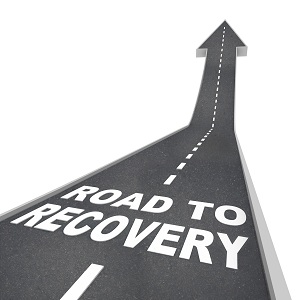What is Withdrawl?
The body’s reaction to the removal of a substance it has become dependent on is called withdrawal. Withdrawal causes craving for more of the substance being removed. The period of time when the body is trying to overcome its addiction is called detoxification (detox). Detox is the first step in overcoming a substance addiction such as drugs or alcohol. Detox is a pertinent step for the patient is to be successfully rehabilitated.
Opiate drugs such as heroin and methadone, and prescription medications including Hydrocodone, Oxycontin, Xanax, Vicodin and Lortab, require medical detox supervision. There are however, other illegal drugs such as marijuana, crystal methamphetamine, and cocaine that do not require medical detox. Since there is psychological dependence associated with these drugs, it would be wise to complete a period of stabilization. The process of drug detox requires the patient to be closely monitored by keeping vital signs, giving support and administering medications if needed.
There are numerous withdrawal symptoms or side effects when a patient stops or dramatically reduces drugs after heavy or prolonged use. Those side effects include:
- Sweating
- Shaking
- Headaches
- Drug cravings
- Nausea
- Vomiting
- Abdominal cramps
- Diarrhea
- Sleeplessness
- Confusion
- Agitation
- Depression
- Anxiety
- Behavioral changes
There are two commonly used drugs to enable the patient to feel relief from these symptoms.
- Klonepin, which reduces physical symptoms
- Buprenophex, which is an anticonvulsant
These drugs must also be monitored as cessation produces withdrawal symptoms. Generally, the time period for drug detox is three to seven days under medically monitored supervision.
Alcohol detox, like drug detox, is usually accomplished in an inpatient medical facility. Duncan Raistrick identifies the key to a successful, planned detoxification is preparation. Raistrick goes further to detail that the first job of therapy is to bring the patient to a point of readiness to change their drinking behavior. Second, patients need to be given accurate information about what to expect during detoxification.
There are two withdrawal categories: minor, meaning early withdrawal and major, meaning late. The severity of withdrawal depends greatly on the duration of alcohol used.
Alcohol Withdrawal Syndrome (AWS) falls into three main categories: central nervous system (CNS) excitation, excessive function of the autonomic nervous system (ANS), and cognitive dysfunction. Richard Saitz, M.D., M.P.H., states, since alcohol enhances gamma-aminobutyric acid’s (GABA) inhibitory effects on signal-receiving neurons, neuronal activity is lowered. This lowering leads to an increase in excitatory glutamate receptors. Tolerance occurs as GABA receptors become less responsive to neurotransmitters, which in turn requires more alcohol to produce the same inhibitory effect. During detox, the GABA is ineffective and unable to suppress the excitatory glutamate receptors.
Detox is intended to relieve physical symptoms such as:
- Shaking or tremors
- Headaches
- Vomiting
- Sweating
- Restlessness
- Loss of appetite
- Sleeplessness
- Delirium Tremens (DT’s)
- Hyperactivity
- Convulsions
Alcohol detox medications are similar to drug detox medications: Buprenophex, certain benzodiazepines and anticonvulsant medications. Alcohol detox completion can take from three to fourteen days.
Norman S. Miller notes that medical management of alcohol and drug withdrawal during detoxification often is not sufficient to produce sustained abstinence from recurrent use. Therefore, further addiction treatments are needed to prevent relapse to alcohol and drug use following treatment of withdrawal.
In conclusion, drug and alcohol detoxification can effectively prepare the addicted abuser for rehabilitation and treatment.
Some physicians believe the withdrawal phase is related closely to the drug addiction – the worse the withdrawal, the more likely the continued use of the chemical to prevent withdrawal.
Numerous factors are key to successful detoxification.
- Acknowledge that there is a problem and decide to do something about it.
- Get rid of all the drugs and paraphernalia.
- Drop friends and associates that are tied to our drug problem.
- Seek and accept spousal support, or support from friends, or relatives.
- Prepare for symptoms with the support of a professional.
- If tranquilizer drugs are needed for a few days or longer, they must be handled sensitively, as one addiction can easily replace another.
References
- http://www.addict-help.com/detox.htm
- Drug and Alcohol Resource Center: Nationwide Alcohol and Drug Addiction Rehab Information.
- Raistrick, Duncan Advances in psychiatric treatment: management of alcohol detoxification The Royal College of Psychiatrists (2000) 6: 348-355.
- DeSena, James. Overcoming your alcohol, drug and recovery habits: an empowering alternative to AA and 12-step treatment. Tuscan, AZ: See Sharp Press, 2003: 68.
- Miller NS. Treatment of the addictions: applications of outcome research for clinical management. New York: Haworth, 1995.
- Blondell, Richard D. Ambulatory detoxification of patients with alcohol dependence, American Family Physician, 1 February 2005.
- Saitz R. Introduction to alcohol withdrawal. Alcohol Health Res World 1998; 22:5-12.
This article was re-posted from http://addictionsearch.com
_________________________________________________________________________________
Going though withdrawl is a very scary thought… But, it is a necessary step on the
TAKE THE FIRST STEP!






